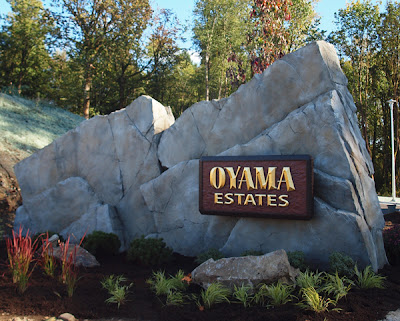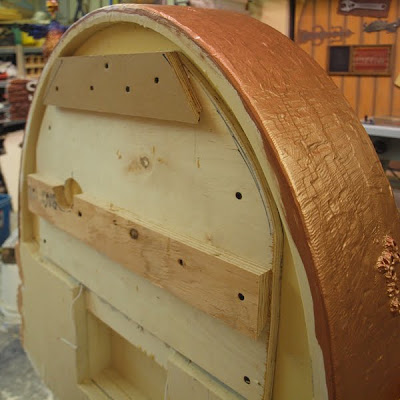With each project we take on I know I will learn many new things. In the case of this project it is true many times over. Because we are stretching the limits of what we do with the CNC router in our effort to show what it is capable of I have learned many new things on that front. We've experimented with new colors and glazes asa well. The rapid texture feature of EnRoute was a whole new field of endeavor for us. And because it has been a while since we have done an industrial project we have discovered many new things about our current building code and how it applies. With our wanting to build something truly different the learning curve has been multiplied exponentially.
This week I volunteered to do our own T-bar ceiling in the MultiCam board room. I knew what I wanted and felt it would just be easier and quicker to do it myself as part of our duties instead of letting the contractor take care of the task. How hard could it be? Little did I know that T-bar ceilings now have to meet stringent building codes and be seismically stabilized and engineered. I also opted for ceiling tiles with a reveal... not knowing they have a 1/4 lip instead of the standard half inch one. I had to be super accurate and on my first curved ceiling too. Each bar I put up had to be seismically tied to the structural ceiling above as did each pot light and fixture. The fellow doing the standard T-bar ceiling in the rest of the building had a good laugh watching me work. But he was also a good sport and offered some suggestions along the way. For good measure we had decided to paint the ceiling the same pearl blue as the walls. It looks spectacular but is also plain old hard work to achieve. As we turn and look back each day as we are leaving, the result has been well worth the effort.
Today for the first time the center pot lights were turned on - 11 in all. The work we've done over the last weeks was at last seen in the final light it would live in. The colors and layers of glazing came alive. Tomorrow the last 12 pot lights will be installed and the work lights extinguished and removed for good.
I'm back in my studio now, designing the last of the pieces to be routed for this room. As we do the last of the labor our thoughts are turning towards the rest of the projects that need to be done for this job. The last of the rapid texture wainscoting was glued on the wall today elsewhere in the building. The MultiCam medallions and corner blocks are almost all up. The painter has begun priming and will be going full blast with the paint over the next week or so. It's coming together faster each day.
They say any day you learn something new is a good day. I d suggest that I have more than my share of good days.
-dan


















































